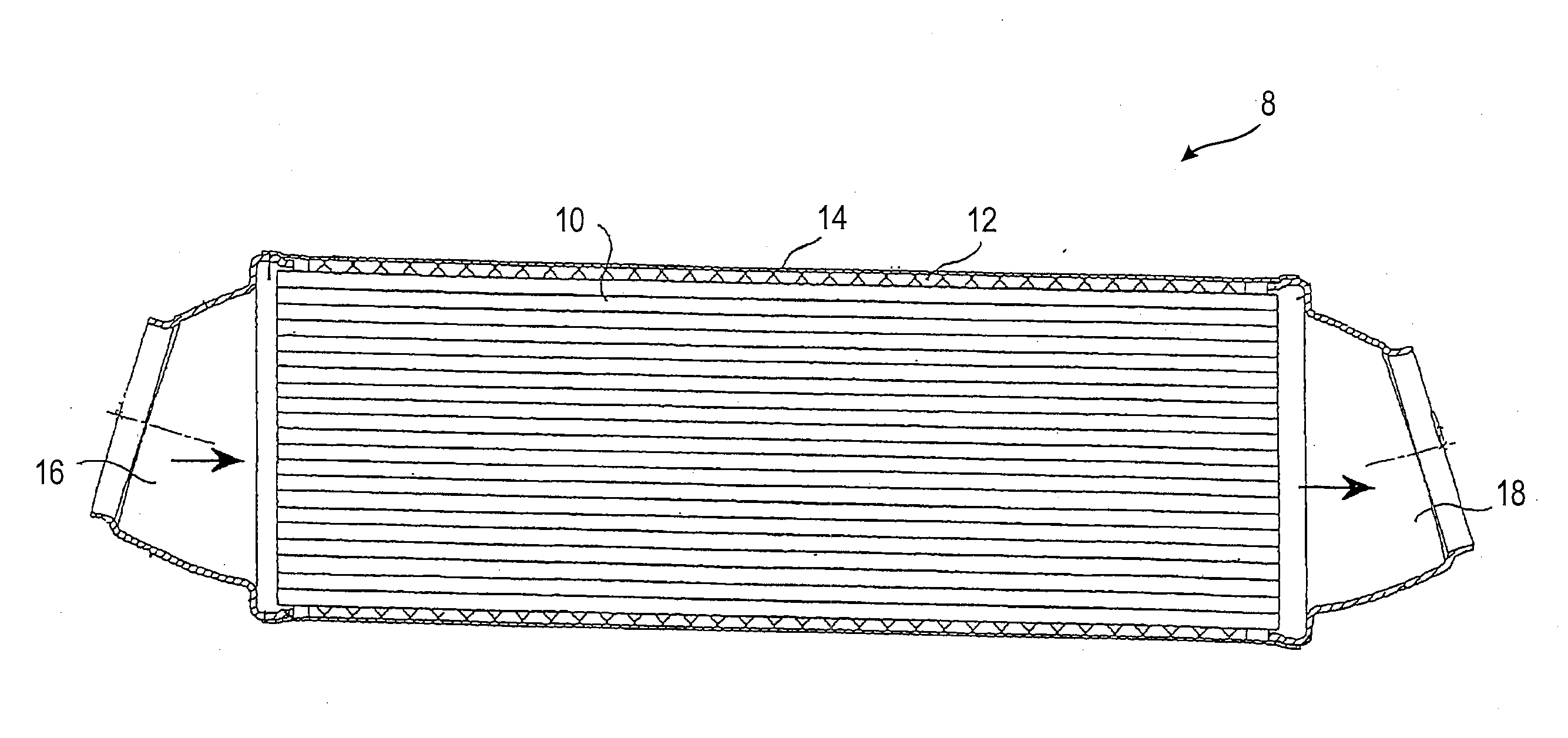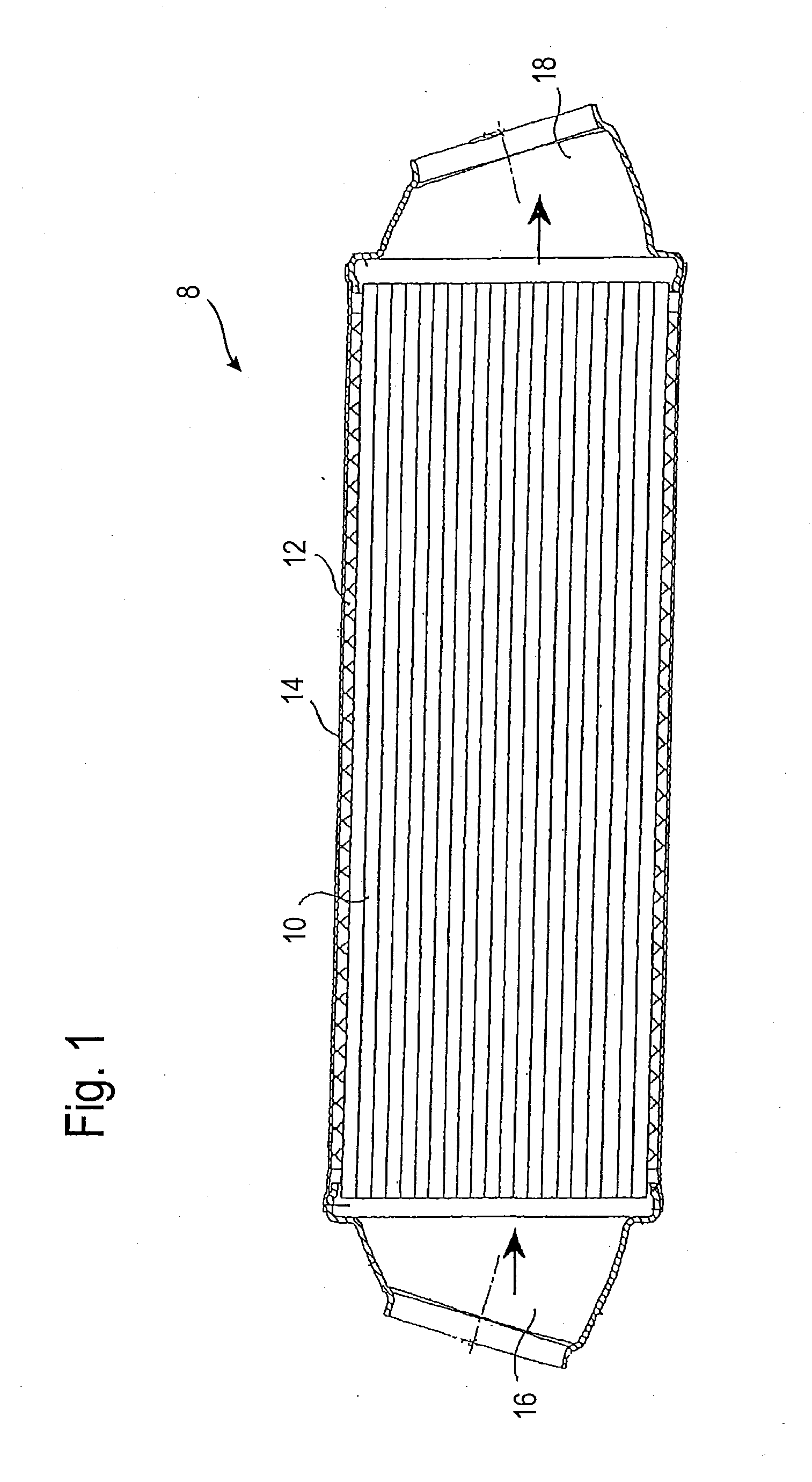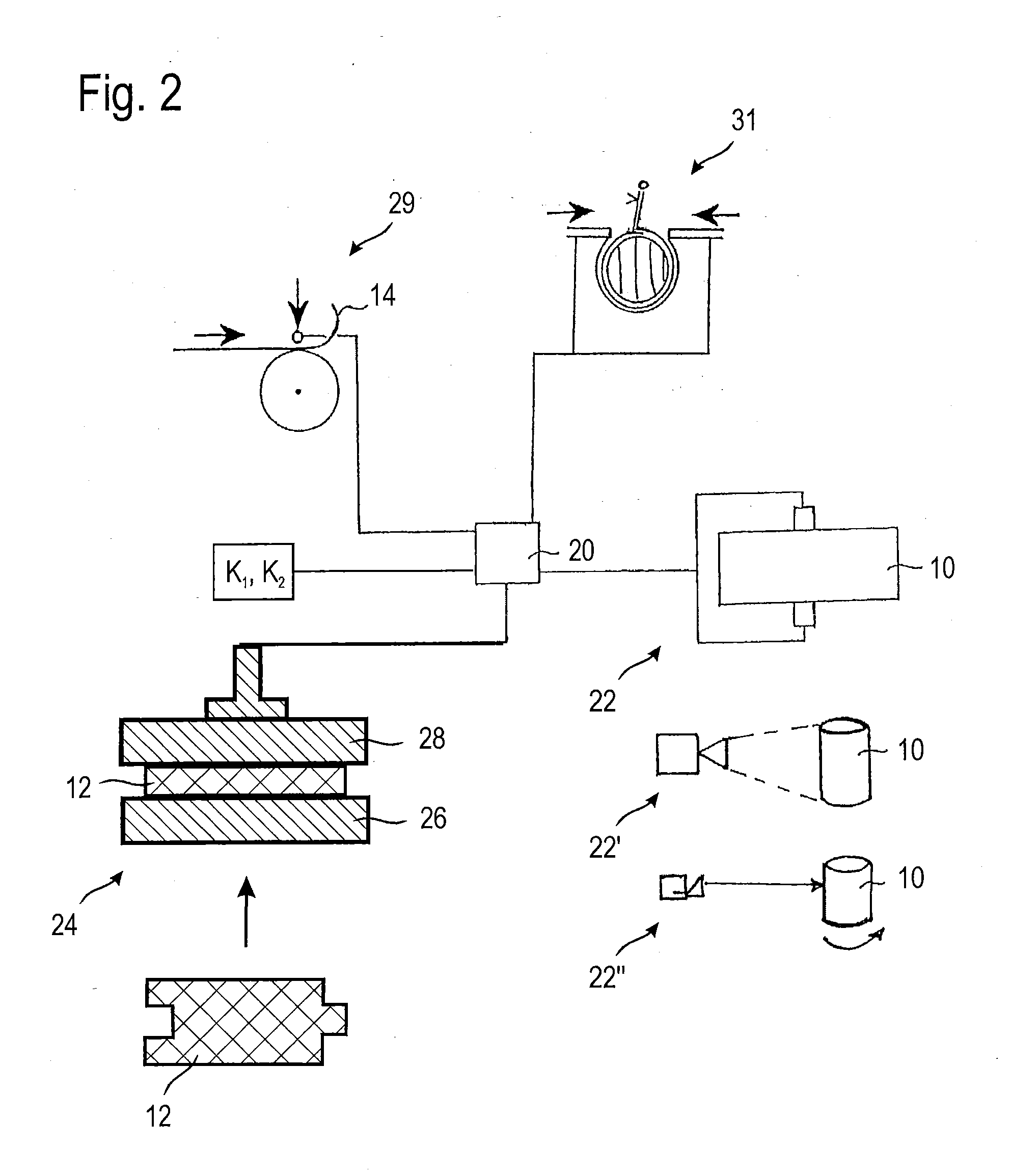Method for manufacturing exhaust gas ducting device
a technology of exhaust gas ducting and ducting tube, which is applied in the direction of machines/engines, engine components, mechanical apparatus, etc., can solve the problems of destroying the insert, i.e. the substrate in the case of catalysts or particle filters, and the force of the clamping force must be so grea
- Summary
- Abstract
- Description
- Claims
- Application Information
AI Technical Summary
Benefits of technology
Problems solved by technology
Method used
Image
Examples
Embodiment Construction
[0043]FIG. 1 shows an exhaust gas ducting device 8 accommodated in a motor vehicle in the form of an exhaust gas cleaning device. The exhaust gas cleaning device either is an exhaust gas catalyst, a particle filter, or a combination thereof.
[0044]The centerpiece of the exhaust gas cleaning device is an elongate, cylindrical substrate 10, which for example comprises a ceramic or metallic substrate, a kind of wound corrugated board, or some other catalytic carrier or filter material with or without coating. The substrate 10 can have a circular-cylindrical cross-section or a non-round cross-section. For simplified representation only, a circular-cylindrical cross-section is shown in the Figures. The substrate 10 is surrounded by a bearing mat which acts as an elastic compensating element 12 between the substrate 10 and an outer housing 14. The outer housing is constructed to be very thin-walled and, in particular, of sheet metal. Upstream and downstream, an inflow funnel 16 and an outf...
PUM
| Property | Measurement | Unit |
|---|---|---|
| Fraction | aaaaa | aaaaa |
| Fraction | aaaaa | aaaaa |
| Temperature | aaaaa | aaaaa |
Abstract
Description
Claims
Application Information
 Login to View More
Login to View More - R&D
- Intellectual Property
- Life Sciences
- Materials
- Tech Scout
- Unparalleled Data Quality
- Higher Quality Content
- 60% Fewer Hallucinations
Browse by: Latest US Patents, China's latest patents, Technical Efficacy Thesaurus, Application Domain, Technology Topic, Popular Technical Reports.
© 2025 PatSnap. All rights reserved.Legal|Privacy policy|Modern Slavery Act Transparency Statement|Sitemap|About US| Contact US: help@patsnap.com



